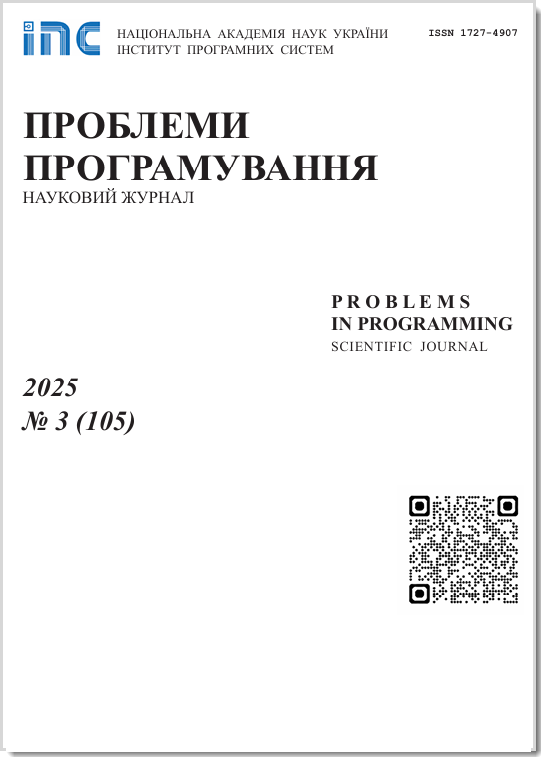Method for political propaganda detection in internet content using neural network natural language processing tools
Abstract
The automation of propaganda detection processes in textual Internet content using natura l language processing is extremely relevant in modern conditions and can provide fast and well-timed targeted detection of hostile manipulative influence in largescale amounts of Internet content. The paper proposes a method of automated propaganda detection that operates in the Ukrainian language. The method for detecting political propaganda in Internet content using neural network natural language processing tools is intended to identify and analyze potentially propagandistic or manipulative content spread on the Internet. The input data of the method is an ensemble of trained models of recurrent neural networks with tokenizers and a text message for analysis. The output data are the level and percentage of propaganda presence for each neural network model of ensemble and in general. To examine the effectiveness of developed method for detecting political propaganda in textual Internet content using natural language processing, which includes the ensemble use of recurrent neural network models of the BiLSTM and GRU architectures, a software implementation of the method was created using Python. The software implementation allows training neural network models and using them to detect political propaganda in textual Internet content. The training data set in Ukrainian was prepared. The test training of an ensemble of classifiers based on the BiLSTM and GRU neural network architectures was conducted. The proposed approach is capable of detecting political propaganda by an ensemble of RNN models with Acuracy 0.97, Precision 0.973, Recall 0.981, and F1 0.976 in the discrete approach (bagging), and Acuracy 0.95, Precision 0.977, Recall 0.987, and F1 0.981 in the binary approach (stacking). The developed method has a limitation: it works with text posts from 200 to 6300 characters long. For shorter and longer texts, performance degradation is observed.
Prombles in programming 2024; 2-3: 288-295
Keywords
Full Text:
PDF (Українська)References
V. V. Posmitna, Features of antiukrainian manipulative propaganda in: Modern conditions. Scientific Bulletin of the International Humanitarian University, 2023 [in Ukrainian]. CrossRef
I. A. Kolesnikova, Problems of countering propaganda and disinformation in open sources of the Internet information and telecommunications network, in: Conference Organizing Committee 88, 2023. [in Ukrainian].
M. A. Polevyi, Technological problems of automatic detection of proRussian propaganda in the Facebook network. Actual problems of state information security management: coll. theses of sciences add. science and practice conf. NA SBU. Kyiv, 2021. pp. 96-98. [in Ukrainian].
Y. V. Tarasenko, Main problems of computerized detection of differences between information influence and propaganda. Modern movement of science: theses XII International Scientific and Practical Conference, 2021. pp. 380-380. [in Ukrainian].
Propaganda.
K. Sprenkamp, D. J. Gordon, L. Zavolokina, Large Language Models for Propaganda Detection, in: Computation and Language, 2023.
X. Liu, K. Ma, K. Ji, Zh. Chen, B. Yang, Graph-based multi-information integration network with external news environment perception for Propaganda detection, in: International Journal of Web Information Systems (2024). CrossRef
V. Solopova, OI. Popescu, C. Benzmüller, Automated Multilingual Detection of Pro-Kremlin Propaganda in Newspapers and Telegram Posts, in: Datenbank Spektrum (2023), pp. 5-14. CrossRef
Russia Today's Disinformation Campaign.
Canada sanctions Russian propagandists, singers, actors, musicians, and Wagner Group media.
O.Zalutska, M. Molchanova, O. Sobko, O. Mazurets, O. Pasichnyk, O. Barmak, I.Krak, Method for Sentiment Analysis of Ukrainian-Language Reviews in E-Commerce Using RoBERTa Neural Network, in: CEUR Workshop Proceedings, 2023, pp. 561-571.
DOI: https://doi.org/10.15407/pp2024.02-03.288
Refbacks
- There are currently no refbacks.









